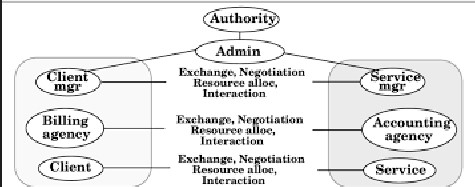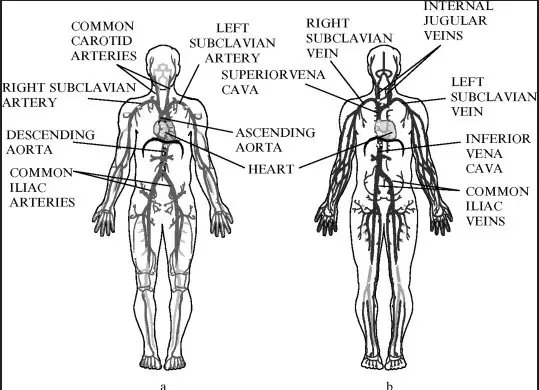The digestive system is a complex and vital mechanism in animals, playing a crucial role in how they convert food into energy and nutrients necessary for survival. Across the animal kingdom, two primary types of digestive systems are observed: monogastric and polygastric. Each system has unique characteristics and functions that cater to the dietary needs of different species, influencing their feeding behavior, nutritional intake, and overall health.
Monogastric animals, including humans, dogs, and pigs, possess a single-chambered stomach where enzymatic digestion begins. In contrast, polygastric animals, such as cows and sheep, have a multi-chambered stomach specialized for fermenting plant-based food, allowing them to efficiently break down fibrous materials that monogastric systems cannot. This fundamental difference underscores the varied evolutionary adaptations animals have developed in response to their environments and available resources.
Understanding these digestive systems offers insights into animal nutrition, health, and the evolutionary biology that shapes the natural world. It highlights the intricate balance between an animal’s physiology and its habitat, underpinning the importance of tailored dietary management in domesticated animals and conservation efforts for wildlife.
Basic Concepts
Digestive System Functions
The digestive system plays a pivotal role in animal nutrition. It is responsible for breaking down food into nutrients, which the body uses for energy, growth, and cell repair. This system transforms food into a form that can be absorbed by the body. The process of digestion involves several stages: ingestion, mechanical digestion, chemical digestion, absorption, and excretion.
- Ingestion: The intake of food.
- Mechanical digestion: Physical breakdown of large pieces of food into smaller pieces.
- Chemical digestion: Breaking down food particles into their smallest components by enzymes.
- Absorption: Nutrients being absorbed by the body.
- Excretion: Eliminating indigestible substances.

Types of Digestive Systems
Digestive systems can be broadly categorized into monogastric and polygastric systems. Each type caters to specific dietary needs and has evolved to maximize the efficiency of nutrient absorption based on the typical diet of the animal.
- Monogastric systems have a single-chamber stomach, suited for animals that consume a variety of foods, including meats and plants.
- Polygastric systems, or ruminant systems, have multiple stomach compartments, specialized for breaking down cellulose from plant material through fermentation.
A brief comparison highlights that monogastric animals typically have a more straightforward digestive process but may lack the ability to break down certain types of plant matter efficiently. In contrast, polygastric animals excel in extracting nutrients from fibrous plant materials but may require more complex digestive mechanics.
Monogastric Digestive System
Definition and Characteristics
The monogastric digestive system is defined by its single stomach structure. This system is common among humans, pigs, and many omnivores and carnivores. It is characterized by its simplicity and effectiveness in digesting a broad range of foods, from animal proteins to non-cellulose plant matter.
Digestive Process
The process in a monogastric system flows from ingestion to excretion, with enzymatic action playing a crucial role in breaking down food. Enzymes such as amylase, lipase, and protease start the chemical digestion process, which is critical for nutrient absorption.
- Ingestion: Food enters the digestive tract.
- Digestion: Enzymes break down food into absorbable units.
- Absorption: Nutrients are absorbed into the bloodstream.
- Excretion: Waste products are eliminated.
Advantages and Limitations
Advantages:
- Dietary flexibility: Monogastric animals can digest a wide variety of foods, making them adaptable to different environments.
Limitations:
- Constraints in digestion: They cannot efficiently break down cellulose, limiting their ability to derive nutrients from certain plant materials.

Polygastric Digestive System
Definition and Characteristics
Polygastric, or ruminant, digestive systems are defined by their multiple stomach compartments. Animals with this type of system, such as cows, sheep, and goats, are able to ferment plant-based food, particularly cellulose, allowing them to digest fibrous material more effectively than monogastric animals.
Digestive Process
The polygastric system’s process is distinct, especially between ruminant and non-ruminant animals. Ruminants undergo a complex digestion process involving fermentation and nutrient absorption in the rumen before the cud is regurgitated and rechewed.
- Fermentation: Microbes break down cellulose in the rumen.
- Regurgitation: Animals chew their cud to further break down food.
- Absorption: Nutrients are absorbed in the intestines.
Advantages and Limitations
Advantages:
- Efficiency in digesting fibrous diet: Polygastric systems are highly efficient at breaking down cellulose, enabling these animals to utilize grasses and forage effectively.
Limitations:
- Dietary restrictions: While efficient at digesting fibrous plant materials, these animals are less adaptable to diets that lack cellulose.
Comparative Analysis
Nutrient Absorption
The efficiency of nutrient absorption significantly differs between monogastric and polygastric animals due to their distinct digestive processes. Monogastric animals absorb nutrients through a simpler, more direct method, whereas polygastric animals benefit from microbial fermentation, which enhances their ability to extract nutrients from fibrous plant material.
- Monogastric efficiency: These animals efficiently digest proteins and simple carbohydrates but struggle with high-fiber plant materials.
- Polygastric efficiency: The fermentation process allows these animals to break down cellulose, accessing nutrients that monogastric animals cannot.
Digestive Efficiency
The impact on animal health and diet is profound, with digestive efficiency directly influencing growth rates, health status, and dietary flexibility. Polygastric animals have a slower digestion process due to fermentation, which provides a steady release of energy but requires a specific diet rich in fiber. Conversely, monogastric animals can adapt more readily to diverse diets, although they are less efficient at extracting energy from fibrous plants.
Environmental Adaptations
Evolutionary aspects play a crucial role in the development of digestive systems. Monogastric systems evolved in animals with diverse dietary needs, enabling them to exploit a variety of food sources. Polygastric systems, however, evolved as a response to a diet predominantly composed of cellulose-rich plants, allowing these animals to thrive in environments where such food sources are abundant.
- Adaptation to scarcity: Polygastric animals can extract more nutrients from less nutritious food.
- Diversity in diet: Monogastric animals can quickly adapt to changes in food availability.
Implications for Animal Nutrition
Dietary Requirements
Understanding the dietary requirements of different animals is crucial for proper nutrition management. Monogastric animals require a balanced diet including proteins, fats, and carbohydrates, while polygastric animals require a diet high in fibrous plants.
- Impact on feeding practices: Nutritionists must tailor feeding practices to the specific digestive system of the animal, ensuring that dietary needs are met to promote health and productivity.
Health Considerations
Digestive health and disease management are pivotal in maintaining a healthy animal. Issues such as malnutrition, digestive disorders, and specific dietary deficiencies are common challenges that require informed management strategies.
- Preventative care: Regular health check-ups and appropriate diets can prevent many digestive issues.
- Disease management: Early detection and treatment are key to managing digestive health problems effectively.
Technological Advances
Enhancements in Digestive Health
Recent advancements have introduced several enhancements aimed at improving digestive health across different animal species. Probiotics and digestive aids have become essential tools in promoting gut health, enhancing nutrient absorption, and preventing digestive disorders.
- Probiotics: Beneficial bacteria that support the natural gut flora, especially important in polygastric animals for optimizing the fermentation process.
- Digestive aids: Supplements designed to enhance the digestive process, beneficial for both monogastric and polygastric animals.
Research and Development
The future of digestive system studies holds promising advancements that could revolutionize animal nutrition and health. Ongoing research focuses on improving digestive efficiency, developing targeted nutritional supplements, and understanding the microbiome’s role in digestion and health.
- Genetic studies: Exploring the genetic basis of digestive efficiency to breed animals with optimized digestive systems.
- Microbiome research: Understanding the complex relationship between the gut microbiome and the host animal to enhance health and disease resistance.
Frequently Asked Questions
What defines a monogastric digestive system?
A monogastric digestive system is characterized by a single-chambered stomach where digestion primarily occurs through enzymatic action. This system is typical of humans, pigs, and other omnivores and carnivores, facilitating the breakdown of diverse diets but limiting the ability to digest cellulose found in plants.
How does a polygastric digestive system work?
Polygastric, or ruminant, digestive systems have multiple stomach chambers, including the rumen, which allows for the microbial fermentation of plant-based food. This process breaks down cellulose, enabling animals like cows and sheep to obtain nutrients from fibrous plant material, which monogastric animals cannot efficiently digest.
Why are polygastric animals better at digesting plants?
Polygastric animals have evolved a complex stomach system that effectively breaks down fibrous plant material through microbial fermentation. This adaptation allows them to extract nutrients from sources that are indigestible to monogastric organisms, making them highly efficient at converting grasses and forage into energy and nutrients.
How do digestive systems affect animal nutrition?
The type of digestive system directly impacts an animal’s nutritional requirements, feeding behavior, and health. Monogastric animals require diverse diets rich in various nutrients, while polygastric animals can thrive on a fibrous, plant-based diet. Understanding these differences is crucial for effective dietary management and animal care.
Conclusion
The distinction between monogastric and polygastric digestive systems reveals the fascinating diversity of animal physiology and its implications for nutrition, health, and evolutionary adaptation.
Recognizing these differences not only enhances our understanding of animal biology but also informs best practices in dietary management, ensuring optimal health and productivity of domesticated animals. Furthermore, it emphasizes the remarkable ways in which animals have evolved to thrive in their respective environments, highlighting the intricate connection between physiology, diet, and the natural world.
By appreciating the complexity and efficiency of these digestive systems, we gain insights into the broader ecological dynamics that govern life on Earth. This knowledge plays a vital role in advancing animal science, agriculture, and conservation efforts, contributing to a more sustainable and informed interaction with the natural world.
